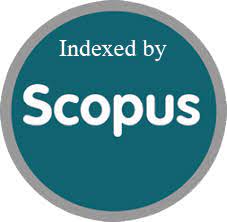Emerging Perspectives on Benign Breast Diseases
DOI:
https://doi.org/10.52783/jns.v14.3851Keywords:
Benign breast diseases, fibroadenoma, fibrocystic changes, mastitis, emerging perspectivesAbstract
Background
Non-malignant breast disorders (BBD) exist as a large group of breast lesions which include fibroadenomas together with
fibrocystic changes and mastitis and rarer pathological conditions. These breast conditions appear commonly and represent
most of the observed breastfeeding clinical cases. There exist two types of benign breast diseases which either have potential
risks of developing cancerous growths or contribute to significant patient quality-of-life changes. Research and clinical
practice about BBD depend on fundamental knowledge of their development mechanisms alongside diagnostic features and
outcomes for creating optimized treatment approaches and developing new diagnostic methods and counseling techniques
and prevention strategies.
Methods
The advisory team performed an observational prospective analysis to examine women who had benign breast lesions at
their tertiary care facility. All participants received clinical evaluations in addition to mammography and ultrasonography
imaging followed by histopathological analysis. Baseline demographic information was collected. All tests including exams,
imaging studies and laboratory analyses were used to determine specific patterns and assess treatment success rates and
discover possible factors which might lead to recurrent conditions or disease advancement.
Results
The study enrolled 200 women who had benign breast diseases and fibroadenoma appeared as the dominant condition while
fibrocystic changes and mastitis followed. The presentations of diseases depended on the age of patients combined with
hormonal factors and their reproductive conditions. The analysis of tissue samples by pathologists revealed both disease
features along with foreseeable treatment outcomes. The treatment approached medical staff with the patients included non
invasive care with medication administration and the implementation of surgery depending on individual circumstances. The
healthcare field introduced three major developing trends that involved minimally invasive biopsy approaches together with
enhanced imaging solutions and hormonal control strategies.
Conclusion
Although benign breast diseases stay within non-cancerous categories they still result in noteworthy physical complications
together with mental stress. The primary need exists for rapid and precise medical diagnostics as well as tailored treatment
methods to stop complications and reduce patient nervousness. Additional study must concentrate on developing diagnostic
techniques while implementing team-oriented treatment plans to optimize therapeutic processes and results of care.
Downloads
Metrics
References
Hughes, L., Mansel, R., & Webster, D. T. (1987). Aberrations of normal development and involution (ANDI):
a new perspective on pathogenesis and nomenclature of benign breast disorders. The Lancet, 330(8571), 1316
Shea, E. K. H., Koh, V. C. Y., & Tan, P. H. (2020). Invasive breast cancer: Current perspectives and emerging
views. Pathology international, 70(5), 242-252.
Stachs, A., Stubert, J., Reimer, T., & Hartmann, S. (2019). Benign breast disease in women. Deutsches
Ärzteblatt International, 116(33-34), 565.
Guray, M., & Sahin, A. A. (2006). Benign breast diseases: classification, diagnosis, and management. The
oncologist, 11(5), 435-449.
Socolov, D., Anghelache, I., Ilea, C., Socolov, R., & Carauleanu, A. (2015). Benign breast disease and the risk
of breast cancer in the next 15 years. Rev Med Chir Soc Med Nat Iasi, 119(1), 135-40.
Bland, K. I., Copeland, E. M., Klimberg, V. S., & Gradishar, W. J. (2023). The breast-E-Book: Comprehensive
management of benign and malignant diseases. Elsevier Health Sciences.
Das, G., Vijayakumar, D. K., Kataki, A. C., & Nair, L. M. (2023). Benign Breast Diseases. In Fundamentals in
Gynaecologic Malignancy (pp. 119-131). Singapore: Springer Nature Singapore.
Fahad Ullah, M. (2019). Breast cancer: current perspectives on the disease status. Breast cancer metastasis and
drug resistance: challenges and progress, 51-64.
Tice, J. A., O’Meara, E. S., Weaver, D. L., Vachon, C., Ballard-Barbash, R., & Kerlikowske, K. (2013). Benign
breast disease, mammographic breast density, and the risk of breast cancer. Journal of the National Cancer
Institute, 105(14), 1043-1049.
Maldonado-Martinez, H. A., Perez-Sanchez, V. M., Sanchez, C. H. C., Juarez-Sanchezand, P., & Meneses
Garcia,
A. (2014). BENIGN BREAST DISEASES: CURRENT PATHOLOGICAL AND
MOLECULARCONCEPTS. Benign Disease of the Breast: Diagnosis and Treatment, 249-305.
Schnitt, S. J. (2003). Benign breast disease and breast cancer risk: morphology and beyond. The American
journal of surgical pathology, 27(6), 836-841.
Govardhan, G. V. (2018). Histopathological Spectrum of Benign Breast Lesions in Women of Age Group 15
Years (Doctoral dissertation, Rajiv Gandhi University of Health Sciences (India)).
Hartmann, L. C., Sellers, T. A., Frost, M. H., Lingle, W. L., Degnim, A. C., Ghosh, K., ... & Visscher, D. W.
(2005). Benign breast disease and the risk of breast cancer. New England Journal of Medicine, 353(3), 229
Mariano, L., Nicosia, L., Pupo, D., Olivieri, A. M., Scolari, S., Pesapane, F., ... & Cassano, E. (2023). A pictorial
exploration of mammary Paget disease: insights and perspectives. Cancers, 15(21), 5276.
.
Downloads
Published
How to Cite
Issue
Section
License

This work is licensed under a Creative Commons Attribution 4.0 International License.
You are free to:
- Share — copy and redistribute the material in any medium or format
- Adapt — remix, transform, and build upon the material for any purpose, even commercially.
Terms:
- Attribution — You must give appropriate credit, provide a link to the license, and indicate if changes were made. You may do so in any reasonable manner, but not in any way that suggests the licensor endorses you or your use.
- No additional restrictions — You may not apply legal terms or technological measures that legally restrict others from doing anything the license permits.










